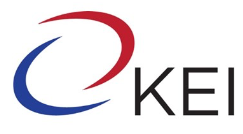The Peninsula
Building the Seoul Metro System, Part 2: Plastic
Published November 26, 2019
Category: South Korea

By Rachel Kirsch
The Seoul Metropolitan Subway is often considered one of the best in the world. From trains that routinely arrive on time to cars enabled with Wi-Fi, the Seoul metro provides riders with a positive experience and short travel times. This near-optimal metro system was not built by accident. It was the result of Seoul’s focus on three distinct aspects of the public transportation system. This is the second in a three-part series focusing on the development of the Seoul metro system. Please see Part 1: Steel and Part 3: Silicon.
The Seoul metro faced a predicament at the turn of the century as funding cuts made further track expansions difficult despite growing demand. In order to improve the system, Seoul focused on implementing the second critical piece of its evolution: operational networks that facilitated people’s ability to access the public transportation system, most notably a comprehensive multi-use fare card.
The 2004 Bus Reform
The focus on the metro system had left the bus system in disarray, and there were severe problems with scheduling and route organization. There was also a lack of coordination between the metro and buses, making it difficult for people to use both networks to complete a trip. In response, the government introduced the 2004 Bus Reform, with the primary goal of integrating the two systems.
The biggest outcome from this reform was the changes made to the fare system. Previously, only single ride tickets were available, meaning every transfer was the price of a single ride. A trip with two transfers would be three times the price of a ride with no transfers.
To address this complication, a new fare system was adopted. Riders paid a flat fee of 1,250 won to ride the system within a 10km zone. Transfers added no additional fee as long as the total length of the trip did not exceed 10km. These changes increased the distance people could travel while simultaneously lowering the cost for individual riders.
The T-Money Card
The change to the fare system was made even more potent by the introduction of the T-Money Card. Before the implementation of the card, riders had to stand in line to purchase a new ticket every time they rode the metro, which took up time and created long lines in the stations. To fix these problems the government partnered with LG to develop and design the T-Money Card which debuted in July 2004.
From its inception, the T-Money Card completely changed the way people paid for public transportation. First, it put the bus and the metro under one payment method allowing people to seamlessly transfer from system to system. Secondly, it reduced the amount of time and money that was previously spent buying a new ticket for every ride. The uses of the card only grew from there. It became a comprehensive transit payment card when taxis were equipped with card readers that accepted T-Money Cards in 2007. And in 2014, it expanded so that the same card could be used for metro systems in a number of cities around South Korea. The usage of the card has extended beyond transportation as some convenience stores accept T-Money Cards as valid methods of payment.
With time, the T-Money Card became even more user-friendly. Originally, the card had to be preloaded with money before it could be used. However, eventually, cards were created that connected straight to bank accounts, allowing riders to skip the process of refilling their cards.
The card not only revolutionized the experience for riders but also changed the way planners and administrators understood the system. Since the new fare system required riders to tap in at their origin station and tap out at their destination station, a new set of data emerged that tracked the exact trips that riders took. Now, the government and researchers alike could see routes, times, frequency, and a variety of other information allowing them to more accurately understand and meet the needs of riders. The T-Money card remains the foremost example of how adding technology could enhance existing public transportation infrastructure.
This was only the beginning. The transit authorities would continue to adopt new technologies to improve services, which is addressed in Part 3: Silicon.
Conclusion
With its new coordination with the buses, the metro was able to extend its reach without building any new tracks. Furthermore, the combination of the new fare system with the introduction of the T-Money Card increased the efficiency and efficacy of transit. These rewards alerted the Seoul Metro Corporation to other technologies that it could adopt to further enhance public transportation.
Rachel Kirsch is an intern at the Korea Economic Institute. Rachel graduated from Belmont University with a degree in international politics. The views expressed here are the author’s alone.
The picture is from user echojun on flickr
